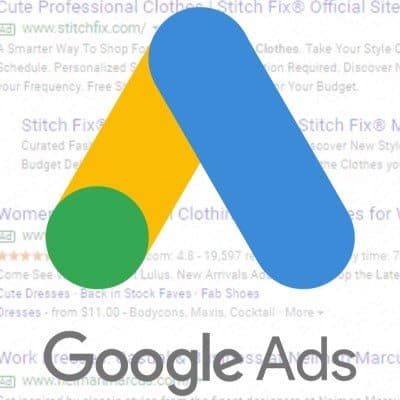Google’s ad extensions are a great way to add character to your ads, as well as take up more real estate on the search engine results page (SERP). Google recommends that you add as many extensions as make sense for your company. They improve quality score, position, click-through rate, and more.
Extensions not only give people more reasons to choose a specific business, they also increase visibility for the business on the SERP. There are a lot of extension options available. Use these best practices to guide you.
Site Link Extensions
Think of site links as added content that helps link a visitor deeper into your website. There are two styles of site links: headline only, and extended sitelinks that contain a headline and a description.
Use extended site links when you have something valuable to add beyond what’s already in your ad copy. Try to enable at least four site links. These can include links to pages like the business contact page, quote form, and about us page. For ecommerce clients, site links can contain links to categories or subcategories of the website.
Site links can be added on account, campaign or ad group levels. Campaign will trump account, and ad group will trump campaign. Don’t use account-level site links unless all site links apply to all campaigns.
Callout Extensions
Callouts allow you to add detailed text to your ads. These should be viewed as non-clickable bullet points, not sentences. Each can contain up to 25 characters. Ecommerce businesses that have ad copy about a product can use callouts to highlight the benefits of the company, like free shipping, free returns, satisfaction guarantee, etc. Business-to-business or service companies like plumbers or lawyers can use callouts to highlight accreditations, hours, etc.
At least three callouts should be created, but five or six is better. Google will rotate them for the account. Like site links, callouts can be added on the account, campaign and ad group levels. Again, use caution when adding callouts on the account level, unless they apply to all campaigns.
Structured Snippets
Shown in the form of a header followed by a list of values, structured snippets list the types of offerings available. There are a number of headers available – including “brands,” “courses,” “destinations,” “styles,” “types,” and “models” – and more are being added all the time. For example, a spa might choose “types” and include the values “massage,” “facial,” “pedicure,” and “manicure.”
Structured snippets are not clickable. They can be added on the account, campaign, and ad group levels. Be careful adding snippets at the account level, and sometimes even on the campaign level, unless they apply universally to all.
Quick Tip!
Make sure the verbiage you add to site links, call outs and structured snippets isn’t identical. If more than one extension is shown at once, you don’t want the message to be repetitive.
Call Extensions
This is the approved way to get a phone number to show in ads. You can use a Google number, or your own number. If you use a Google number, the calls will be tracked as conversions in Google Ads.
These extensions can be added on the account, campaign, and ad group levels, but usually are added on the account level because the phone number is usually the same across campaigns.
Message Extensions
If you want to communicate quickly with potential customers on mobile devices, use message extensions. People can click the message extension to send a text to the company. You can set up an automated reply so that you don’t need to answer your messages 24 hours a day. These can be added on account, campaign, and ad group levels.
Location Extensions
When a person is located in close proximity to the address, Google Ads shows location extensions displaying the business address, directions, and distance to the business location. They are tied to your Google My Business account, which is how they are added to Google Ads.
These can be used on both search and display campaigns, and can be added on all levels. However, they are usually only added at the account level unless different campaigns are targeting different geolocations.
Price Extensions
Showcase ecommerce products with exact prices (or a “from” price) to allow people to click to that product or category directly using price extensions. These are able to be added on account, campaign, and ad group levels. Be careful when adding account- and campaign-level price extensions, unless they apply universally to all.
Promotion Extensions
Add value to text ads by highlighting your sales and promotions with promotion extensions. Promotion options include a percentage or dollar-off amount, and either a minimum-order amount or promotion code (but not both). Free shipping is not currently allowed as a promotion extension.
These extensions can display up to two lines of text and can include timing parameters to ensure they are only visible during the promotional period. Promotion extensions can be added on all levels.
App Extensions
When you link your mobile or tablet app to your ads, searchers can either click the ad link and be taken to the landing page or click the app extension and be taken directly to the app store for easy downloading. Like all extensions, app extensions can be added on the account, campaign and ad group levels.
Note: This article was originally posted Jan. 22, 2018, and was substantially updated Oct. 14, 2019.



